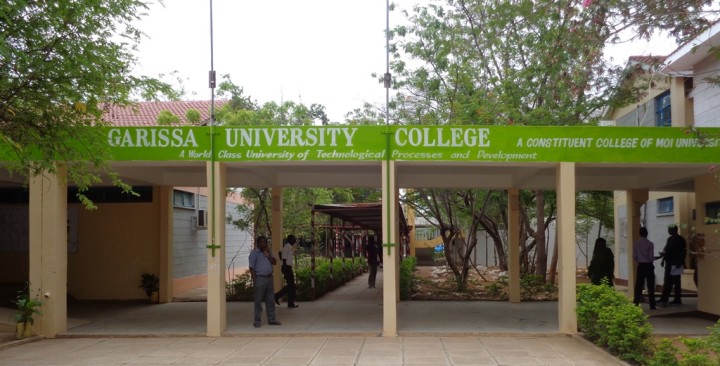No one is left without a sensation of horror at last week’s awful attack on Garissa University College, Kenya in which it seems that the dead number more than 150 young students who had their whole lives ahead of them. It is also noticeable that world leaders have not flocked to Kenya in order to march in solidarity with President Kenyatta and the people of Kenya as they did with President Hollande and the people of France after the Charlie Hebdo attack. Such hypocrisy requires a separate article though.
The roots of this terrorism in Kenya are surely not simple but certainly have to do with the colonial history of both Kenya and Somalia. With Somali territory divided between the French, the British and the Italians, after the second world Somalia was reconstituted into Somalia and Djibouti but with parts of Somali territory handed over to Ethiopia and other parts forcibly incorporated into what would become the Republic of Kenya in 1963.
To illustrate the point of colonial interference all you have to do is look at the map. Three straight lines mark the border between Kenya and Somalia. Africans certainly didn’t draw these lines.
A huge swathe of Kenyan territory, almost exclusively inhabited by Somalis then voted overwhelmingly in an unofficial plebiscite to secede and re-join Somalia. This led to the “Shifta War” of 1963 to 1967 which the central government won. During the war the Somali population was herded into concentration camp settlements called “protected villages” and their livestock was wantonly slaughtered leaving them impoverished. Eventually a ceasefire was signed with the Somali Republic (who had been supporting the secession movement) which then went on to suffer decades of war and violence which still continues to this day.
The recent Truth and Justice Report produced in Kenya following the 2007/2008 election violence found the Kenyan regime at the time of the Shifta War to be guilty of “killings, torture, collective punishment, and denial of basic needs [food, water, and health care]”.
The detail of the Truth and Justice Report regarding the Shifta war is horrifying:
“The Commission finds that the Kenyan Army committed mass killings of civilians during the Shifta War and that the number of people who were killed during the War is possibly much higher than the official figure of 2000. Most of the killings took place in villages but the Commission also received evidence showing that killings took place in places of worship.”
“The Commission finds that violations against women were widespread and systematic. These violations included rape and other forms of sexual violence. The Commission received evidence that women were held as sexual slaves by members of the Kenyan Army.”
“The Commission finds that the Kenyan Army was responsible for the killings and large-scale confiscation of livestock belonging to civilians. The shooting of especially camels was a particular strategy employed by the Army as it was believed that camels were used by the Shifta to transport guns and other supplies. The Army was responsible for the poisoning of livestock.”
“The Commission finds that as part of the Shifta War, the Kenyan government established restricted or protected villages or camps in which residents of Northern Kenya were essentially detained and their movement severely restricted. This villagisation programme was eerily reminiscent of the detention camps created during the colonial period. The conditions in the restricted villages in Northern Kenya were squalid. Accounts received by the Commission indicate that diseases such as dysentery, pneumonia, malaria and tuberculosis were common in the villages.”
Clearly there is a lot of stuff here that has not been reconciled.
Somalia’s descent into civil war and decades of talks to try to establish some kind of democratic regime resulted in the alienation of some groups which kept their arms and now call themselves al-shabaab. Kenya has been participating in the African Union mission to Somalia to wipe it out and al-shabaab militants in turn have found Kenya to be an easy target for revenge attacks.
For years the tourism industry has been devastated along the coast with attacks from the major tourist centre of Mombasa all the way to the idyllic island of Lamu in the north. Last year an attack on a shopping centre in one of the most prosperous neighbourhoods of Nairobi resulted in over 70 dead.
This attack in Garissa now is another one in a long line that seems to have no end in sight. The militants are either already in Kenya as refugees or as Kenyan citizens, or come over the border with no difficulty. Nairobi is awash with weapons if you know where to buy them. Such attacks like this are almost impossible to predict and prevent without turning the country into a police state with a permanent night time curfew and round the clock police checks.
Opposition politicians in Kenya are calling for Kenyan forces to withdraw from Somalia to the border and prevent anyone from crossing it, but the border is hundreds of kilometres long and a large population of unreconciled Somalis live in Kenya in any case.
Resolving the terrorism will not be easy as is the case with all occurrences of it, but whether the terrorism is in the Middle East, Africa, Asia or Madrid, New York or London, it seems that the source can always be traced back to a colonial history and a lack of a plan to resolve the poverty and economic disasters caused by a global economic system which subjects something like 3.5 billion human beings to a life in poverty.










